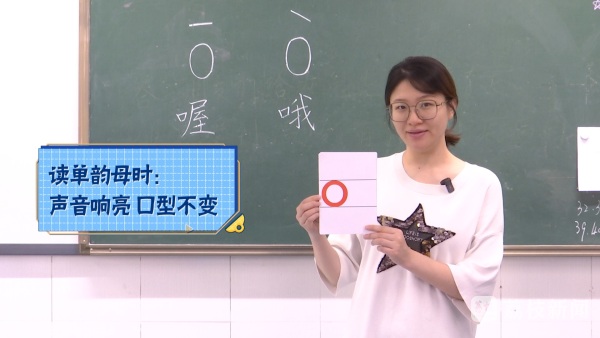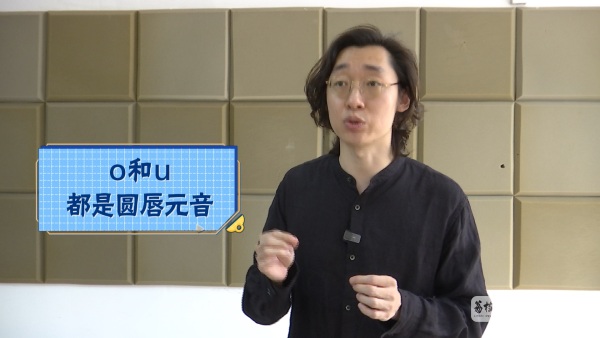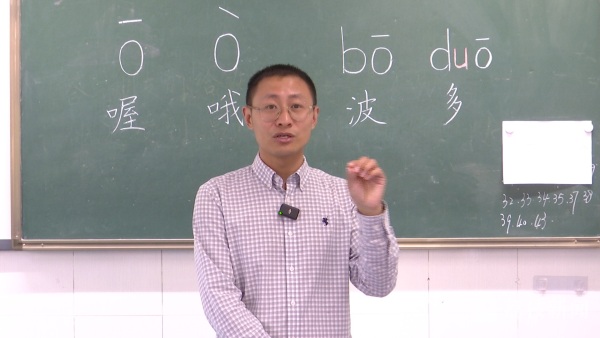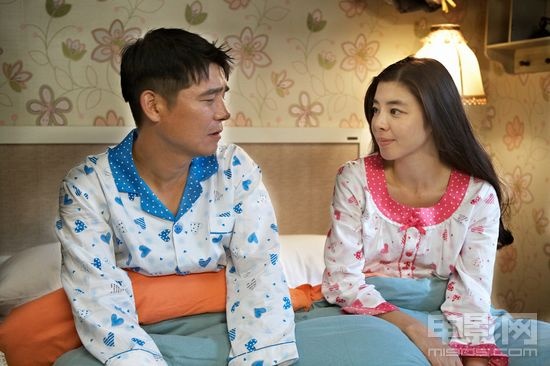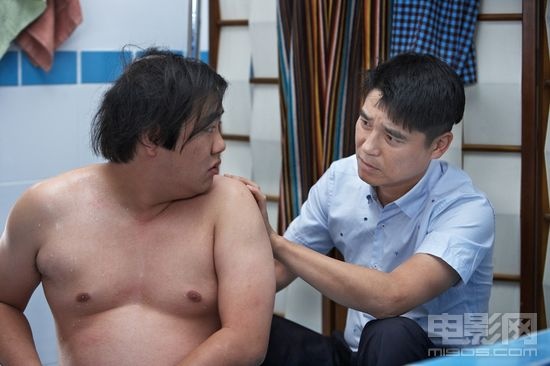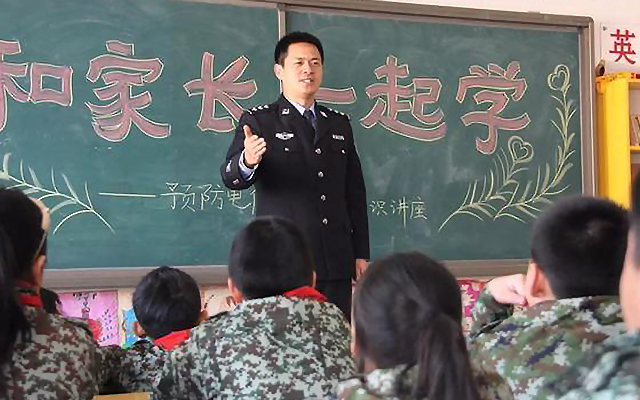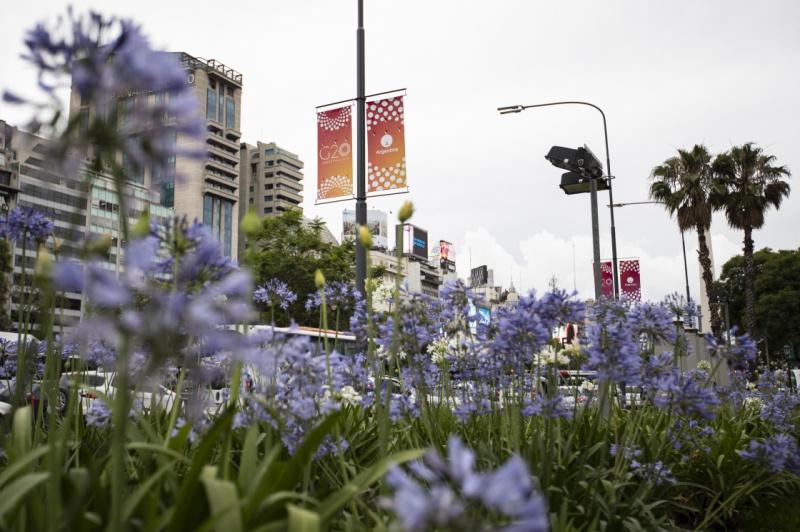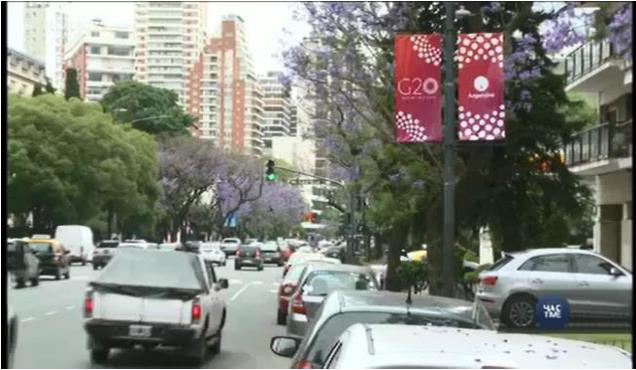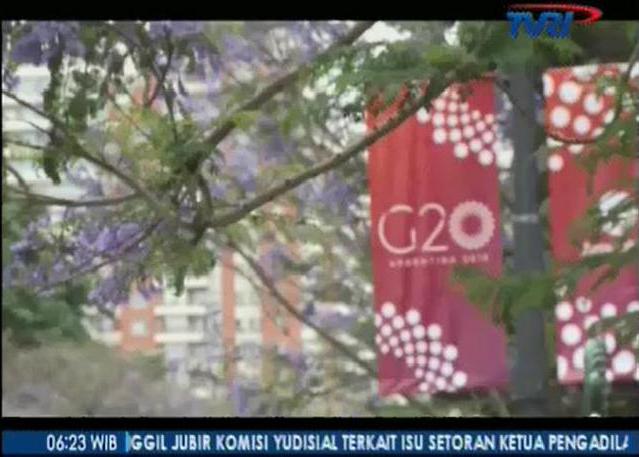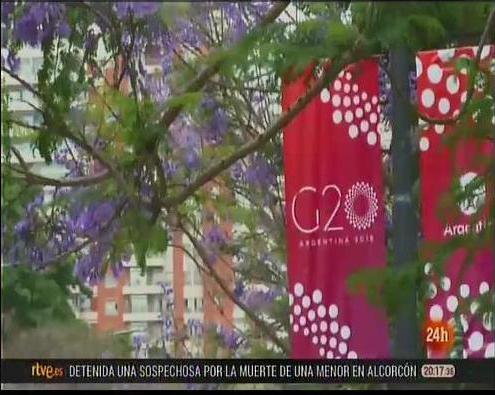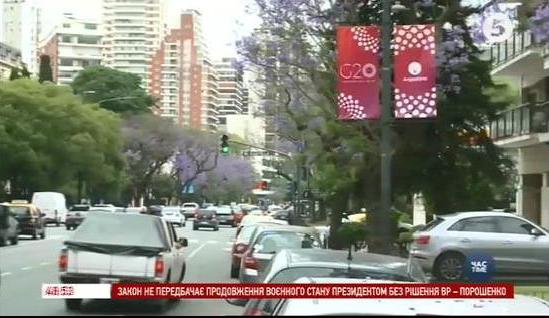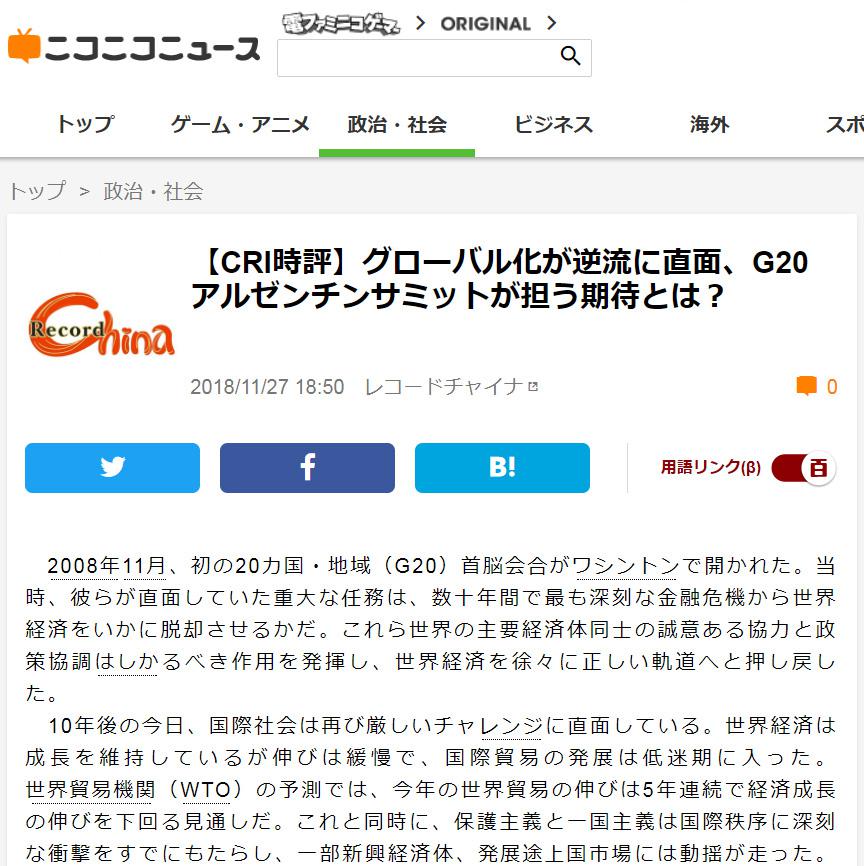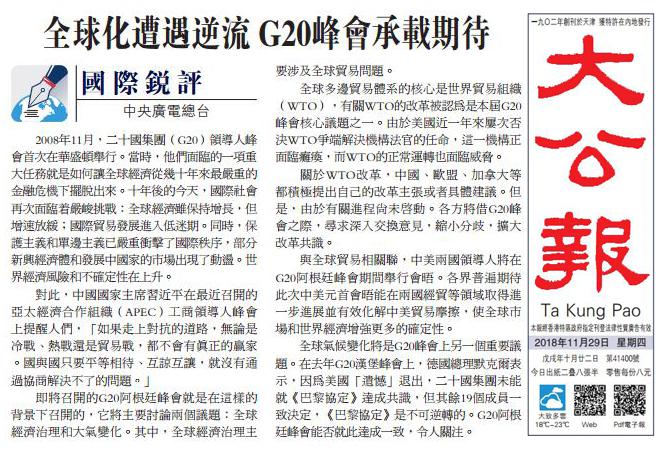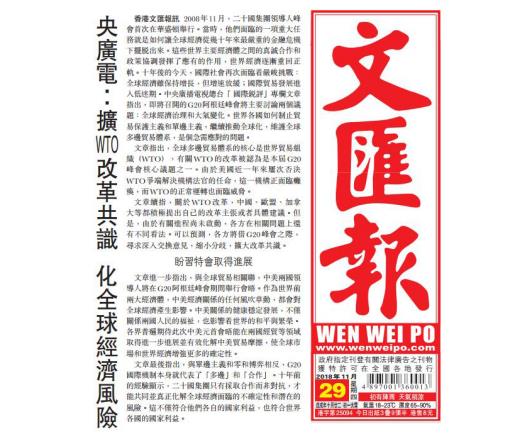Since entering the volt last week.
The power of summer heat is beginning to show signs
as the proverb goes
Practice three nine days in winter and three days in summer.
The harder the external conditions are.
The more you should show the quality of overcoming difficulties.
Work hard, come on!
Look at this broadcast. Jun brought it.
What are the good jobs and jobs?
Let’s fight together!
Heping district education system
Hebei district education system
Xiqing district ecological environment bureau
Ninghe district Federation of trade unions
Boqing group
Take a quick look.
Is there anything suitable for you?
◆◆
Heping district education system
◆◆
In order to further strengthen the construction of high-level education talents in Heping District, it is planned to openly recruit 17 outstanding high-level education talents for Heping District Teacher Training School (Teaching and Research Section) and twenty middle school, Tianjin. The specific implementation plan is as follows:
Click to view a larger image.
First, the recruitment target and conditions
(1) Recruitment target
Social personnel who meet the requirements of post conditions
(2) Recruitment conditions
1. Basic conditions
(1) Support the Constitution of People’s Republic of China (PRC), abide by all laws and regulations, and have good conduct;
(2) Love education, be dedicated to their posts, abide by professional ethics, and have pioneering spirit, dedication and team spirit;
(3) Applicants should have a bachelor’s degree or above in the corresponding discipline (or related disciplines) and a corresponding degree, and the age should be 45 years old and below (especially excellent can be appropriately relaxed);
(4) Having the physical conditions to perform their duties normally;
(5) Having the major and working ability required by each post;
(6) Having a teacher qualification certificate corresponding to the position to apply for;
(7) Teachers’ qualification certificate, graduation certificate, degree certificate and other certificates required for applying for the post must be obtained before applying for the exam. When submitting the graduation certificate and degree certificate, the education department’s academic certification report must be issued;
(8) Conforming to the relevant provisions on avoidance;
(9) Other conditions required by each post.
2. Specific conditions
(1) Having the title of senior teacher in primary and secondary schools (among which one of the national model teachers, national excellent teachers, special-grade teachers and full-time senior teachers is preferred);
(2) Have more than 10 years of first-line teaching experience in corresponding disciplines;
(3) Have won the honorary title of prefecture-level city and above;
(4) Have won the second prize and above in the provincial teaching skill competition;
(5) Have won the first prize of educational and teaching achievements in prefecture-level cities and above;
(6) independently presiding over and completing educational, teaching and scientific research projects in prefecture-level cities and above, and the results have certain influence;
(7) More than 3 academic papers on education and teaching have been published in provincial and ministerial publications.
Note: The above items (1)-(2) must be met, and (3)-(7) must meet at least three of them.
3. Those who have one of the following circumstances may not apply for the exam:
(1) Having received criminal punishment for a crime;
(2) Having been expelled from public office;
(3) active servicemen;
(4) Being found to have cheated in the recruitment of civil servants and the open recruitment of public institutions, and being banned from taking the exam;
(5) There are other circumstances in which laws and regulations stipulate that it is not allowed to participate in the open recruitment of public institutions.
Second, the recruitment procedures and methods
In this recruitment, the District Education Bureau set up a leading group for open recruitment of high-level outstanding educational talents to organize and implement recruitment-related work in a unified manner. There is an office under the leading group, which is located in the Personnel Section of the District Education Bureau.
(1) Release information
From July 15th to July 22nd, 2019, it was published on Tianjin Talent Service Center Network (www.tjtalents.com.cn/) and Peace Government Network (http://www.tjhp.gov.cn/).
(2) Registration and qualification examination
This recruitment registration is conducted by combining online registration with on-site registration.
1. Registration time: from 8:30 on July 20, 2019 to 17:00 on July 26, 2019 (on-site registration time is from 8: 30 am to 11: 30 am and from 14: 00 pm to 17: 00 pm).
2. Online Registration: Applicants download the Application Form for Open Recruitment of High-level Excellent Education Talents in Heping District, fill it out as required, and send it to rsk6256@126.com mailbox within the specified time.
Download address of registration form:
http://d.shiyebian.net/shiyebian/d/2019/20190715/ %E5%A4%A9%E6%B4%A5%E5%B8%82%E5%92%8C%E5%B9%B3%E5%8C%BA%E5%85%AC%E5%BC%80%E6%8B%9B%E8%81%98%E5%BC%95%E8%BF%9B%E9%AB%98%E5%B1%82%E6%AC%A1%E4%BC%98%E7%A7% 80%E6%95%99%E8%82%B2%E4%BA%BA%E6%89%8D%E6%8A%A5%E5%90%8D%E8%A1%A8x.doc
3. On-site registration: Applicants who pass the examination will be informed to bring the required materials to the Personnel Section of Heping District Education Bureau for registration. Address: Room 2110, No.257 Nanmenwai Street, Heping District, Tianjin. The specific time is subject to the telephone notification. Please make sure that the telephone number left for registration is accurate and smooth.
4. Materials required for on-site registration:
(1) Application Form for Open Recruitment of High-level Education Talents in Heping District.
(2) The original and photocopy of the ID card and the original and photocopy of the household registration book (home page and personal page).
(3) The original and photocopy of the teacher qualification certificate.
(4) Original and photocopy of graduation certificate and degree certificate.
(5) Original and photocopy of other documents specified in the recruitment conditions.
(6) engaged in education and teaching work summary (within 2000 words) and relevant supporting materials such as education and teaching performance.
(7) Two recent bareheaded two-inch photos.
The recruitment unit shall examine the qualifications of the applicants, and the results of the qualification examination shall be answered within 48 hours after the applicants register. Those who fail to pass the qualification examination should be clearly informed of the reasons for not agreeing to apply for the examination.
(3) Assessment
This recruitment is conducted by means of assessment. Set up an assessment team composed of relevant experts to assess the candidates. The main contents and methods of assessment:
1. Consult the relevant documents of the applicants, the summary of their education and teaching work, the achievements in education and teaching, and other relevant supporting materials to understand their basic situation.
2. The assessment team takes the form of defense to examine the professional ability of the candidates.
3. The assessment team determines the assessment results according to the assessment of each candidate, and arranges them from high to low. With the consent of the Heping District Education Bureau, the list of medical examiners is determined according to the ratio of 1:1.
The time and place of assessment will be notified separately.
The examination results and the list of those who entered the medical examination were published on Tianjin Talent Service Center Network (www.tjtalents.com.cn).
Third, physical examination and investigation
Physical examination is organized by Heping District Education Bureau. Physical examination personnel shall go to the designated hospital for physical examination within the specified time. The items and standards of physical examination shall be implemented with reference to the unified national standards and procedures for the physical examination of civil servants before the introduction of the physical examination standards for open recruits in public institutions. Applicants who fail to attend the physical examination at the prescribed time and place due to non-organizational reasons are deemed to have given up automatically.
Investigate those who pass the physical examination. The inspection was organized and implemented by Heping District Education Bureau and inspection materials were issued.
Fourth, publicity
Heping District Education Bureau determines the list of persons to be hired according to the assessment, physical examination and inspection, and after being audited by the District Human Resources and Social Security Bureau, it will be publicized on the Tianjin Talent Service Center Network for 7 working days.
After the expiration of the publicity period, if there are no problems or problems that do not affect the employment, the employment procedures shall be handled according to the prescribed procedures; To reflect the problems that affect the employment and find evidence, cancel the employment qualification. If it is difficult to verify the problems reflected at the moment, the relevant formalities will be suspended, and then whether to hire or not will be decided after being found out.
After going through the employment formalities, Heping District Education Bureau fills in the Record List of Employees Employed by Institutions in Tianjin and reports it to Heping District Human Resources and Social Security Bureau for review, and reports it to the Municipal Human Resources and Social Security Bureau for record. At the same time, Heping District Education Bureau is responsible for organizing the verification of academic qualifications, degree certificates and other documents required by the post. Those who provide false documents shall not be employed or the employment contract shall be terminated, and shall be dealt with according to relevant regulations. The verification fee shall be borne by the person to be hired.
V. Welfare benefits
This recruitment is included in the staffing management of public institutions. The salary, welfare and treatment of the employed personnel shall be implemented in accordance with the equivalent personnel standards stipulated by the state, city and district. At the same time enjoy the following benefits:
(1) According to Tianjin’s policies on the introduction of talents, public security, human resources and social security departments have solved the household registration and personnel relations of imported talents, and solved the problem of their spouses and minor children entering and settling in Tianjin according to regulations.
(two) the children of imported talents enjoy the same policy as residents in this area in terms of enrollment.
(three) the introduction of talent in Tianjin without my own housing, can enjoy the Heping District talent apartment rent-free for 3 years.
(four) in line with the conditions of outstanding talents in Heping District education system can be included in the management of outstanding talents, give priority to the selection of outstanding talents in Heping District education system, and be inclined.
If the relevant procedures such as employment cannot be handled due to personal reasons, the consequences will be borne by the proposed employee himself.
VI. Management and Assessment
Imported talents sign employment contracts with employers, stipulate the rights and obligations of both parties, and establish and improve the incentive mechanism combining job responsibilities, work objectives, training, assessment, use and treatment.
VII. Discipline and Supervision
The recruitment work was supervised by the discipline inspection department of Heping District Education Bureau. In the recruitment process, the avoidance system shall be strictly implemented, and the confidentiality discipline shall be strictly observed. The custody of test questions shall be managed according to the relevant confidentiality regulations, and the person in charge shall not disclose the composition of the examiner. In the process of the open recruitment examination of public institutions, applicants who violate disciplines and regulations will be dealt with according to the Provisions on Handling Disciplinary Violations in Open Recruitment of Public Institutions (Order No.35 of Ministry of Human Resources and Social Security of the People’s Republic of China) and other relevant laws and regulations, and will be included in my credit file.
Recruitment consultation telephone: Heping District Education Bureau 022-27126256
Consultation time: 8: 30am-11: 30am and 2: 00pm-5: 00pm on weekdays.
Recruitment supervision telephone: District Human Resources and Social Security Bureau 022-27267680
The Office of the Leading Group for Open Recruitment of High-level Educational Talents of the District Education Bureau shall be responsible for the interpretation of matters related to recruitment.
◆◆
Hebei district education system
◆◆
In order to meet the needs of education and teaching in Hebei education system, the institutions affiliated to Hebei Education Bureau openly recruit 50 staff for fresh graduates and social workers from full-time colleges and universities who meet the post requirements and have Tianjin household registration. The specific implementation plan is as follows:
Click to view a larger image.
First, the recruitment target and recruitment conditions
(1) Recruitment target
Full-time college graduates and social workers who meet the job requirements and have Tianjin household registration.
The deadline for calculating the registration age is the first day of registration, that is, July 24, 2019.
(2) Applicants shall meet the following conditions
1. Abide by the Constitution and laws; Have good conduct;
2. The applicant has a bachelor’s degree and a bachelor’s degree, and should be under the age of 25 (born after July 24, 1993); With a master’s degree and a master’s degree, the age should be under 30 (born after July 24, 1988); With doctoral degree and doctoral degree, the age should be under 35 years old (born after July 24, 1983);
3. Have the specialty or skill required by the post;
4. Physical conditions that meet the requirements of the post;
5. Comply with the relevant provisions of avoidance.
(three) any of the following circumstances, shall not apply for.
1. Persons who have been criminally punished for crimes or have been expelled from public office;
2. Persons who are being put on file for review;
3. Persons who have not been dismissed from party discipline and political discipline;
4. Non-fresh graduates who are studying;
5. Servicemen;
6. Persons who are not allowed to apply for other circumstances as stipulated by law.
Second, the recruitment information release
According to the approved recruitment plan, the recruitment announcement will be formulated in a unified manner. Applicants will inquire on the following websites from 9:00 on July 15, 2019 to July 23:
Northern Talent Network: http://www.tjrc.com.cn
Tianjin Talent Service Center Website: http://www.tjtalents.com.cn
Three, registration and payment methods, time and related matters
Examination registration and payment are conducted on the registration website.
Registration time: 9:00 on July 24, 2019 to 17:00 on July 28, 2019.
Written examination payment time: from 9:00 on July 24th to 17:00 on July 29th, 2019.
Time to change the newspaper: July 31, 2019 from 9:00 to 16:00.
The ratio of the number of recruitment positions to the actual number of applicants should not be less than 1:3 in principle. If this ratio is not reached, the number of recruits for this position should be reduced or the recruitment for this position should be cancelled.
Four, examination and qualification review
The exam includes a written test and an interview.
(1) Written examination
Candidates who apply for teacher positions, the written test subject "Comprehensive Education Knowledge", the test questions are unified by the municipal professional examination institutions. The written test is conducted in the form of closed book, with a full score of 100.
Download time of written test admission ticket: from 9:00 on August 7 to 18:00 on August 9, 2019.
Written test time: August 10, 2019, 9:00-11:00 am, comprehensive education knowledge.
On August 16, 2019, applicants can go to Hebei Education Bureau to check the publicity or log on to the registration website to check the written test results and related information. After the written test, according to the written test scores from high to low, according to the ratio of the number of recruitment plans for each position to the number of interviewees of 1:3, the list of candidates for each position to enter the interview is determined. When the number of people who enter the interview for the recruitment position is less than 1:3, the interview shall be conducted according to the actual number of people who enter the interview for the position.
(two) the time, place and method of qualification review.
Applicants who have passed the written test must hold relevant materials before the interview and conduct a qualification review in Hebei Education Bureau (No.205 Zhongshan Road, Hebei District) on August 18, 2019 (8: 30 am-11: 30 am and 2: 00 pm-5: 00 pm). Those who fail to pass the qualification review, voluntarily give up the qualification review or fail to participate in the qualification review at the specified time and place, and those who practice fraud and provide untrue materials during the qualification review will be disqualified from the interview. Due to the above reasons, the job vacancies can be filled by the recruiting unit according to the actual needs, according to the written test scores from high to low. The materials required for qualification review are as follows:
(1) A registration form;
(2) One original and one copy of the ID card;
(3) One original and one copy of the household registration book;
(4) One original and one copy of academic certificate and degree certificate (graduates in 2019 are required to provide one original and one copy of employment recommendation form (stamped with the official seal of the department));
(5) A certificate issued by the current work unit (with official seal) or an archive certificate issued by the archive department;
(6) One original and one copy of the teacher qualification certificate (the 2019 and 2018 graduates have not obtained the teacher qualification certificate at the time of verification, so it is unnecessary to provide it. However, it is necessary to sign a letter of commitment to provide the original and photocopy of the teacher qualification certificate when handling the employment procedures, otherwise the employment qualification will be cancelled);
(7) One original and one copy of the English, computer and other relevant certificates required for applying for the post;
(8) Xuexin. com (Ministry of Education) inquires about China’s higher education qualifications, and downloads and prints a copy of the Record Form for Electronic Registration of Education Certificates of the Ministry of Education and a copy of the degree inquiry results of the degree website.
Holders of diplomas from universities in Hongkong, Macau, Taiwan Province and foreign countries must have the education certification of the education department and the certification materials from Chinese embassies and consulates abroad.
(3) Interview
Teachers’ job interviews take the form of structured interviews and trial lectures to examine the professional knowledge level and professional quality of candidates (including blackboard writing).
The interview score is 100 points, and the passing line is 60 points. Those who fail to reach the passing line will not be hired.
The examination questions are unified by the municipal professional examination institutions.
Interview time: subject to the interview admission ticket.
If the interviewer fails to participate in the qualification review at the specified time and place and fails to participate in the interview in accordance with the regulations, it will be deemed as an automatic waiver of the interview qualification.
Candidates should take the test according to the time and place determined on the written test and interview admission ticket. When taking the exam, you must bring your admission ticket and ID card (the second generation) at the same time. Applicants who lack either certificate are not allowed to take the exam.
Three days after the interview, candidates who participated in the interview can go to Hebei Education Bureau to check the publicity or log on to the registration website to check the total score and medical examination notice.
The calculation method of the total score of the exam is as follows: total score = written test ×40%+ interview ×60%.
If the total score is tied, the person with the highest written test score will be the final candidate for physical examination and inspection.
In the process of written examination and interview, if the applicant lacks any subject examination, it will be regarded as automatically giving up the qualification to enter the next link.
V. Physical examination and investigation
(1) Physical examination
After the interview, the list of medical examinees will be determined according to the total test scores from high to low, and the ratio of the number of recruits in each position to the number of people entering the medical examination is 1:1.
The items and standards of physical examination shall be implemented with reference to the standards and procedures for the physical examination of civil servants before the introduction of the physical examination standards for public recruiters in public institutions.
Applicants who fail to participate in physical examination, re-examination or appraisal at the specified time and place due to non-organizational reasons are deemed to have given up automatically. If the applicants fail to pass the physical examination or voluntarily give up the physical examination, the recruiting unit may, according to the needs of the work and after approval, make up the applicants from the position according to the total score from high to low.
(2) Investigation
The inspection shall be organized and implemented by the recruiting unit or its superior competent department. The contents of the investigation include the candidates’ ideological and political performance, moral quality, professional ability and work performance, and the qualifications of the candidates are reviewed. If it is not suitable to be employed as a staff member of a public institution after investigation, it will not be employed.
Sixth, publicity
The personnel to be hired will be publicized in the Northern Talent Network and the Hebei District People’s Government Network. The publicity content includes the name of the recruiting unit, the recruitment position, the name of the person to be hired, gender, registration number, graduation institution or work unit, and the publicity period is 7 working days.
VII. Discipline and Supervision
(1) In 2019, the open recruitment of the education system in Hebei District of Tianjin actively accepted the supervision of the society and superiors to ensure the openness, fairness and impartiality of the recruitment work.
(B) Hebei district education system to openly recruit staff to implement the avoidance system. When handling recruitment matters, the leaders of the recruitment unit and the personnel in charge of recruitment involve husband and wife relationship, lineal blood relationship, collateral blood relationship within three generations, close in-laws relationship or other circumstances that may affect the fairness of recruitment, and they shall withdraw.
(three) to provide false materials, cheating in the exam and other candidates who violate the open recruitment discipline, depending on the seriousness of the case, cancel the exam or apply for qualification; The employed personnel who violate the recruitment regulations shall, once verified, terminate the employment contract and be retired.
(four) telephone consultation and supervision
Recruitment consultation telephone: 022-26288256
Network consultation telephone: 022-28013603
Supervision Tel: 022-26217738
Consultation time: 8:30-11:3014:00-17:00 on weekdays.
This open recruitment examination for public institutions does not specify counseling books, nor does it hold or entrust any institution to hold counseling training courses. The remedial classes, counseling websites, publications and Internet cards held in any name in the society have nothing to do with this exam. Please be vigilant.
◆◆
Xiqing district ecological environment bureau
◆◆
In order to meet the employment needs of Tianjin Xiqing District Motor Vehicle Emission Inspection and Control Station, a public institution affiliated to Tianjin Xiqing District Ecological Environment Bureau, we are now openly recruiting 6 staff members from public institutions. The specific implementation plan is as follows:
Click to view a larger image.
I. Recruitment target, number and conditions of posts
(1) Recruitment target
Full-time graduates of ordinary colleges and universities who meet the job requirements (diploma and degree certificate must be obtained before the end of July 2019) and social personnel.
(2) Number of recruitment positions
There are 6 specialized technical posts in public institutions.
(3) Recruitment conditions
1. Applicants shall meet the following conditions:
(1) having People’s Republic of China (PRC) nationality;
(2) Tianjin hukou (excluding school collective hukou);
(3) Over 18 years old and under 30 years old (born between July 29, 1988 and July 29, 2001);
(4) Abide by the Constitution and laws and have good conduct;
(5) Having the required major or skill for the post, the major of the applicants shall be subject to the major marked in their graduation certificate (refer to the Catalogue of Undergraduate Majors in Colleges and Universities issued by the Ministry of Education (2012) and the Catalogue of Discipline and Specialty for Postgraduates Awarded Doctoral and Master’s Degrees (promulgated in 1997)), and the returned students shall be subject to the certification materials issued by the Study Abroad Service Center of the Ministry of Education;
(6) Have a nationally recognized bachelor’s degree or above, bachelor’s degree or above (diploma and degree certificate must be obtained before July 29, 2019);
(7) Being in good health and having physical conditions that meet the requirements of the post;
(8) Conforming to the relevant provisions on avoidance;
(9) Meet other requirements stipulated in the recruitment position.
2. Anyone who has one of the following circumstances shall not apply for the exam:
(1) Persons who have received reeducation through labor or criminal punishment or have been expelled from public office;
(2) the person who is accepting the case review;
(3) Persons who have been punished within the Party or above by administrative warning and who have not been dismissed from the disciplinary action of Party discipline and political discipline;
(4) Non-fresh graduates and active servicemen who are studying;
(5) Persons who have been found to have cheated in the recruitment of civil servants and the open recruitment of public institutions, and are prohibited from taking the exam;
(6) Persons in other circumstances who are prohibited by law from applying for the exam.
Second, the recruitment position query
For details of the number of recruits, positions and qualifications, please refer to the Schedule of Open Recruitment of Staff in Public Institutions of Tianjin Xiqing District Ecological Environment Bureau in 2019. Applicants can inquire through Xiqing Talent Network (www.xqrc.com.cn), Northern Human Resources Network (www.tj-nhr.cn) and Northern Human Micro-recruitment WeChat WeChat official account (bfrlzp) from July 15th, 2019.
Third, registration
The registration and payment of this exam are online. The website of registration and payment is: Northern Human Resources Network (www.tj-nhr.cn).
Registration time: from 9:00 on July 29th to 16:00 on August 2nd, 2019.
Payment time: from 9:00 on July 29th to 16:00 on August 4th, 2019.
Candidates are required to fill in the information and upload relevant materials according to the requirements of the registration system. Candidates can log in to the registration system to check the qualification examination results within 48 hours after submitting the registration application. Candidates who pass the qualification examination must pay the fee within the specified time. Candidates who fail to confirm the payment within the specified time will be regarded as automatically giving up their registration qualification and may not participate in the next link.
Candidates must fill in the form truthfully according to the published conditions when registering. If the applicants submit false information and materials that do not meet the requirements of the application conditions, the recruiting unit may cancel the candidates’ examination and employment qualifications, and bear all the consequences arising therefrom. Candidates can’t get a refund after successful registration. Please register carefully. In principle, the ratio between the number of recruitment plans and the actual number of applicants (those who have passed the qualification examination and paid fees) is not less than 1:3. If this ratio is not met, the number of recruitment plans for this position will be reduced or cancelled in proportion.
The written examination registration fee is 45 yuan per person/subject. According to the relevant policies of the state and our city, applicants from urban families and rural poor families who enjoy the national minimum living allowance shall be provided with relevant materials (candidates from urban families who enjoy the national minimum living allowance, their ID cards, certificates, low guarantees (photocopies) and household registration books issued by the district and county civil affairs departments where their families are located, Applicants from rural poverty-stricken families will go to the 3rd floor of Building 1, No.103, Bawei Road, Hedong District, Tianjin from July 29th to August 2nd, 2019 (9:00-11:30 am and 14:30-17:00 pm) with their ID cards, poverty-stricken certificates issued by the county poverty alleviation offices (departments) where their families are located.
Fourth, the content and form of the examination
The exam includes a written test and an interview.
(1) Written examination
The written test is divided into "Professional Ability Test" and "Comprehensive Knowledge", which are closed-book, with full marks of 100. The vocational ability test is an objective test with a time limit of 120 minutes; Comprehensive knowledge (text synthesis, finance, computer) is the main objective test questions, and the examination time limit is 150 minutes; After the written test, the written test scores will be calculated according to the proportion of "Professional Ability Test" accounting for 50% and "Comprehensive Knowledge" accounting for 50%. The written test scores will be out of 100, with one decimal place reserved.
The written test time is August 10, 2019. For details, please refer to the written test admission ticket. The written admission ticket can be printed on the registration website after 9:00 on August 7, 2019.
Applicants should take the written test at the time and place determined by the admission ticket. Candidates who are absent from any subject will be regarded as absent from the written test, and the written test score will be calculated according to zero, and they will not be allowed to enter the follow-up interview. When taking the written test, you must bring your admission ticket and ID card, and those who lack any documents are not allowed to take the written test.
At 9:00 on August 16, 2019, applicants can log on to the registration website to check the written test results and related information.
(2) Interview
After the written test, the written test scores are sorted from high to low, and according to the ratio of the number of job recruitment plans to the number of interviewers of 1:3, the interviewers are determined to enter, and those with the same written test ranking will enter together; When the number of people entering the interview is less than 1:3, the interview shall be conducted according to the actual number of people entering the interview. Interviewers are required to bring the original and photocopy of the registration form, ID card, household registration book, diploma, degree certificate and other relevant information required by the post downloaded and printed on the registration website to the designated place for qualification review (the specific time, place and requirements will be notified separately). Those who fail the qualification review will be disqualified from the interview. Those who fail to participate in the qualification review according to the specified time and place shall be deemed to have given up the interview qualification automatically. If the recruitment position fails to meet the requirements of the interview ratio due to the applicants voluntarily giving up the interview qualification, unqualified qualification review or other reasons, the candidates from the same position shall be sorted from high to low according to the written test scores and supplemented in turn. Candidates who have passed the qualification review should log in to the registration system at the specified time to print the interview admission ticket.
Printing time of interview admission ticket: Open the printing function of interview admission ticket from 9:00 on August 28, 2019.
Interview time: August 31, 2019. For the specific time and place, please refer to the relevant information of the interview admission ticket. When participating in the interview, you must bring the interview admission ticket and ID card at the same time. Applicants who lack any documents are not allowed to participate in the interview.
The interview adopts structured interview method, with a perfect score of 100 points, a qualified line of 60 points, and one decimal place reserved for the results. Those who fail to meet the qualification line in the interview are not qualified for admission. After the interview test results are determined, the interview test results will be announced on the spot.
(3) Determination of comprehensive scores
The calculation method of comprehensive test scores is: written test scores and interview scores account for 50% respectively.
Comprehensive score = written test score ×50% interview score ×50%, with 2 decimal places reserved. Candidates can log in to the registration system on September 4, 2019 to check the comprehensive score, ranking and medical examination.
V. Physical examination
The qualified interviewees are ranked according to their comprehensive scores from high to low, and the list of people participating in the medical examination is determined according to the ratio of the number of job recruitment plans to the number of people entering the medical examination of 1:1. If the comprehensive scores of applicants are tied, resulting in the number of people entering the medical examination exceeding the number of job admission plans, the medical examination personnel will be determined according to the interview results from high to low. If there is still a tie, it will be determined as a medical examiner together.
Physical examination refers to the General Standard for Physical Examination of Civil Servants (for Trial Implementation) (No.1 [2005] issued by the Ministry of People’s Republic of China) and the Manual for Physical Examination of Civil Servants (for Trial Implementation) (No.19 [2010] issued by the Ministry of Human Resources and Social Security) and goes to the designated hospital for physical examination.
Applicants who fail to participate in physical examination, re-examination or appraisal at the specified time and place due to reasons other than the recruiting unit shall be deemed to have given up automatically. Job vacancies due to unqualified candidates’ physical examination or voluntary abandonment of physical examination shall be filled from qualified candidates in the original job interview according to the comprehensive scores of written examination and interview from high to low. When the comprehensive scores of the replacement personnel are tied, the replacement personnel shall be determined according to the principle of giving priority to interview results.
VI. Investigation
The inspection shall be organized and implemented by the recruiting unit and its competent department. The investigation should be comprehensive, objective and fair. The contents of the investigation include the political thought, moral quality, ability and quality, work attitude, law-abiding, study and work performance, honesty and self-discipline, and whether it is necessary to avoid it. At the same time, the qualifications of the investigated object are reviewed and the investigation materials are truthfully written. If it is not suitable to be employed as a staff member of a public institution after investigation, it will not be employed.
VII. Publicity
According to the physical examination and investigation, the recruiting unit and its competent department determine the list of persons to be hired, and publicize the persons to be hired on the Northern Human Resources Network (www.tj-nhr.cn) and the Northern Human Micro-recruitment WeChat WeChat official account (bfrlzp), including the name, gender, registration serial number, ID number, graduation institution or work unit of the persons to be hired. At the same time, the supervision and reporting telephone number will be announced and accepted by the society. The publicity period is 7 working days. After publicity, it will not be replenished.
VIII. Filing and Employment
After the expiration of the publicity period, if there are no problems or problems that do not affect the employment, the recruiting unit will report the list of persons to be employed to the Xiqing District Human Resources and Social Security Bureau in accordance with the relevant regulations, and after being filed by the Tianjin Human Resources and Social Security Bureau, go through the employment procedures and sign the Employment Contract (including the probation period); To reflect the problems that affect the employment and find evidence, cancel the employment qualification; If it is difficult to verify the problems reflected at the moment, the employment procedures will be suspended, and then whether to hire or not will be decided after the investigation.
IX. Discipline and Supervision
In this recruitment work, the spirit of "Implementation Measures for Open Recruitment of Public Institutions in Tianjin (Trial)" (No.10 [2011] issued by Tianjin Human Resources and Social Security Bureau) and "Notice of Municipal Party Committee Organization Department on Further Improving Open Recruitment of Public Institutions" (No.37 [2017] issued by Tianjin Human Resources and Social Security Bureau) were strictly implemented, and we consciously accepted the supervision of the society and the masses. Personnel engaged in recruitment work who need avoidance relationship with the applicants should avoid official duties. Relevant personnel who violate recruitment discipline and regulations shall be dealt with according to relevant regulations.
Applicants should establish the concept of honor in honesty examination and shame in violation of discipline and fraud. In the process of open recruitment, applicants who violate discipline and discipline shall be dealt with in accordance with the Provisions on Handling Violations of Discipline and Discipline in Open Recruitment of Institutions (Order No.35 of the Ministry of Human Resources and Social Security) and recorded in my integrity file.
This open recruitment examination does not specify counseling books, nor does it hold or entrust any institution to hold counseling training courses. The remedial classes, counseling websites, publications and Internet cards held in any name in the society have nothing to do with this exam. Please be vigilant.
Technical consultation: 022-23140080
Supervision Tel: 022-27931279
Registration consultation: 022-27399712
Telephone acceptance time: 8:30-11:30 on working days; 14:30-17:30
◆◆
Ninghe district Federation of trade unions
◆◆
In order to supplement the vacancy of socialized trade union workers in township trade unions, Ninghe District Federation of Trade Unions plans to openly recruit 6 socialized trade union workers (contract workers) for the society. The specific positions and requirements are as follows:
Click to view a larger image.
First, the recruitment principle
According to the relevant requirements of the Interim Provisions of Tianjin Municipality on the Employment Management of Socialized Trade Union Workers, open recruitment is conducted for the society, and the best is selected to ensure the quality. The employment work adopts the method of combining public examination with strict assessment, and selects the best one.
Second, the basic conditions
(a) good political quality, love trade union work, have a strong sense of politics, responsibility and service.
(two) have a certain level of policy theory, strong organizational and coordination skills, language skills, writing skills and computer skills.
(3) Having a full-time bachelor’s degree or above, and registered in this district;
(four) good character, good health, not more than 30 years of age (born after July 15, 1989).
(five) any of the following circumstances, shall not apply:
1. Persons who have been criminally punished for crimes or have been expelled from public office;
2. Persons who are being put on file for review;
3. Persons who have been punished by party discipline and discipline and handled by the judicial department;
4. Other circumstances in which laws, regulations and relevant policies stipulate that it is not allowed to be employed.
Third, the recruitment method
(a) announcement
On July 15th, 2019, the announcement was issued through Zhongtian Human Resources Network (http://www.cnthr.com).
(2) Time and method of registration
Registration and payment time: from 9:00 on July 17 to 17:00 on July 22, 2019. Applicants shall pay the written test service fee within the specified time, and each person shall be 45 yuan.
Examination registration and payment are conducted on Zhongtian Human Resources Online. Failure to go through the payment procedures within the time limit will be deemed as invalid registration and will automatically give up the qualification for the next link.
Applicants should truthfully fill in the relevant information in the Registration Form. Applicants can only choose one position to register. The application materials submitted by applicants should be true and accurate. Those who provide false application materials will be disqualified once verified. Those who forge or alter relevant documents, materials and information without authorization to cheat the examination qualification will be dealt with in accordance with the relevant regulations, and the consequences will be borne by the applicants. Candidates should always pay attention to the news published on the website and keep the mobile phone number filled in the registration form unblocked. If they fail to take the exam or have problems arising from on-site qualification examination for personal reasons, the candidates will bear the consequences.
Applicants need to make their recent 1.5 inch bareheaded color photos (the background color is one of blue, white and red) into electronic files (.JPG or. JPEG format, the file size is less than 200K) through scanners, digital cameras and other equipment, and be sure to prepare them in advance as required and upload them to the corresponding location when filling out the registration form.
If the ratio of the number of applicants to the number of recruitment plans is less than 3: 1, the recruitment unit will adjust the recruitment plan of the position accordingly.
(3) written examination
The content of this written test: "Administrative Ability Test".
Successful applicants should download and print the admission ticket from 9:00 on July 25, 2019 to 24:00 on July 26, 2019.
Written test time: July 27, 2019, the specific time and place can be found in the written test admission ticket.
Candidates should take the written test according to the time and place determined by the written test admission ticket. The written test scores of the absent candidates are calculated according to zero, and they are not allowed to enter the follow-up qualification review. When taking the written test, you must bring the written test admission ticket and ID card, and those who lack any documents are not allowed to take the written test.
On July 31, 2019, applicants can log on to the registration website to check the written test results and related information.
(4) Qualification examination
After the written test, the written test scores are ranked from high to low, and the same written test scores are tied. After ranking, according to the ratio of 1:3 in the recruitment plan, it is determined to enter the qualification review according to the ranking of written test results. When the number of people entering the interview examination is less than 1:3, it shall be conducted according to the actual number of people entering the interview.
Candidates who enter the interview must hold the original and photocopy of relevant qualification certificates, including ID card, the first page and my page of the household registration book, academic certificate, Electronic Registration Form of Academic Certificate of the Ministry of Education and 2 registration forms to the designated place for qualification examination.
Qualification review time: August 1, 2019 from 9: 00 to 11: 30.
Qualification examination unit: China Tianjin Human Resources Development Service Center.
Address for qualification examination: Floor 1, No.58 Jiulong Road, Hexi District, Tianjin
Those who pass the qualification examination shall pay the interview and examination service fee 45 yuan online from 10: 00 on August 1 to 17: 00 on August 5, 2019.
Candidates who fail to participate in the qualification examination at the prescribed time and place are deemed to have given up on their own. If you give up or fail to pass the qualification examination, and fail to participate in the qualification examination according to the prescribed time and place, the vacant interview places will be filled in order according to the written test scores from high to low.
(5) Interview
The interview is structured. The total score of the interview is 100 points, and 60 points are passed. Candidates who fail will not be hired.
The interview admission ticket is downloaded and printed from 9:00 on August 8, 2019 to 24:00 on August 9.
Applicants should attend the interview according to the time and place determined on the interview admission ticket. When participating in the interview, you must bring the interview admission ticket and the second-generation ID card at the same time. Applicants who lack any documents are not allowed to participate in the interview. After the interview, the interview results will be announced on the spot.
Interview time: August 10, 2019 (see the interview admission ticket for the specific location, time and candidates’ instructions).
(6) Physical examination and inspection
After the interview, the total score is calculated according to the proportion of 50% written test results and 50% interview results. The written test scores and interview scores are kept to 1 decimal place each, and the total score is kept to 2 decimal places.
On August 14, 2019, the total score of candidates was announced on the registration website.
The total score is sorted from high to low, and the list of participants is determined according to the ratio of 1:1 between the number of candidates and the number of people entering the medical examination. If the total scores of applicants are tied, resulting in the number of people entering the medical examination exceeding the number of people in the employment plan, the list of people entering the medical examination shall be determined according to the principle of giving priority to those with high written examination scores. If the written test results are tied, the list of medical examiners will be determined according to the priority employment conditions. Physical examination items and standards refer to the General Standard for Physical Examination of Civil Servants (Trial).
The medical examination time will be announced separately. Those who fail to attend the medical examination at the specified time and place shall be deemed to have given up automatically. According to the actual needs, the recruitment unit can make up the examination results in order from high to low.
The inspection is organized and implemented by the recruiting unit. The contents of the investigation include the candidates’ ideological and political performance, moral quality, professional ability and work performance, and the qualifications of the candidates are reviewed. Personnel who are not suitable for employment after investigation shall not be employed.
(7) publicity
The personnel to be hired will be publicized uniformly on the recruitment website for 7 days.
IV. Employment Management and Treatment
(1) Newly hired staff, after the expiration of publicity, sign a labor contract with a probation period of two months. Those who fail to pass the probation period will be disqualified.
(2) In accordance with the relevant provisions on wages and benefits in the Interim Provisions on the Employment Management of Socialized Trade Union Workers in Tianjin.
V. The Ninghe District Federation of Trade Unions shall be responsible for the interpretation of matters not covered in this scheme.
Special note:
This recruitment examination does not hold or entrust any organization to hold counseling training courses. The counseling classes and counseling websites held in any name in the society have nothing to do with this examination. Please be vigilant.
Policy consultation telephone: 022-69155388
Registration Tel: 022-23266305
(9:00-12:00 and 14:00-17:00 on weekdays)
◆◆
Bohai light industry investment group
◆◆
Tianjin Bohai Light Industry Investment Group Co., Ltd. (hereinafter referred to as "the company") is a municipal state-owned enterprise. We have products with high market popularity and influence, such as Seagull Watch, Jinjiu, Shanhaiguan soda, Tiannv ink, flying pigeon bicycle, queen bee furniture and Chunhe sports equipment. We have 13 well-known trademarks in China and 8 time-honored brands in China. The general manager and deputy general manager are now openly selected for the society, as follows:
I. Selecting and appointing positions
(1) General Manager
Be fully responsible for the operation and management of the daily business of the company.
(2) 3 deputy general managers
1 in charge of production and operation;
1 in charge of marketing;
In charge of financial management and capital operation.
Second, the scope and conditions of employment
(a) the scope of employment
Open recruitment for the whole country.
(2) Conditions of employment
Have a good political quality, seriously study the Supreme Leader’s Socialism with Chinese characteristics Thought in the new era, firmly establish the "four consciousnesses", firmly "four self-confidences", resolutely achieve the "two maintenance", adhere to the socialist direction of state-owned enterprises, be familiar with enterprise management, have an international vision and strategic thinking, have working experience and professional accomplishment matching the position, have a keen sense of the market, have outstanding business performance, and have good professional ethics, professional credit and personal conduct. At the same time, meet the following qualifications:
1. General Manager’s qualifications
(1) Having accumulated more than 10 years working experience in related enterprises or related economic, financial and legal work experience.
(2) He has held the following positions for more than 2 years: deputy positions (including equivalent positions) or above in the headquarters of central enterprises, or deputy positions (including equivalent positions) or above in the headquarters of state-owned enterprises and other large enterprises with similar scale, or members of the same type of large private enterprises.
(3) Have a bachelor’s degree or above.
(4) Generally, the age is not more than 53 years old, and those who are particularly excellent can be relaxed to 55 years old, and they have the physical conditions to perform their duties normally.
(5) Meet other qualification requirements stipulated by relevant laws and regulations.
2. Qualification of Deputy General Manager
(1) Having accumulated more than 10 years working experience in related enterprises or related economic, financial and legal work experience.
(2) He has held the following positions for more than 3 years: middle-level positions (including equivalent positions) and above in the headquarters of central enterprises, or middle-level positions (including equivalent positions) and above in the headquarters of provincial state-owned enterprises and other large enterprises of similar size, or middle-level positions and above in large private enterprises of the same type.
(3) Have a bachelor’s degree or above.
(4) Generally, the age is not more than 50 years old, especially excellent ones can be relaxed to 52 years old, and they have the physical conditions to perform their duties normally.
(5) Meet other qualification requirements stipulated by relevant laws and regulations.
Iii. Term of office and remuneration of the selected personnel
(1) Term of office
The hiring personnel shall be managed by professional managers, with a term of three years, and can be renewed after the expiration of the term of office.
(2) Remuneration and treatment
Refer to the salary level of similar comparable personnel in the market, and provide attractive salary.
Fourth, the selection process
Registration → qualification examination → comprehensive assessment and evaluation → investigation and background investigation → determination of candidates to be hired → physical examination → formal appointment.
V. Registration Procedures and Related Instructions
(1) Registration procedures
1. Registration time
July 2-July 23, lasting for 3 weeks.
2. Registration method
Online registration or on-site registration can be used (each person is limited to one position).
(1) Online registration: please visit the company’s website (www.bhqgtz.com), click on "Professional Manager Recruitment" at the top right of the page, log in to the registration system, fill in the registration information, and upload the photo (blue background), work summary or debriefing report for the past three years, academic degree certificate (scanned certificate, and certification report issued by the Study Abroad Service Center of the Ministry of Education if foreign academic degrees are involved), and relevant qualification certificates (professional titles, professional achievements and reports).
(2) On-site registration: Please go to Tianjin Bohai State-owned Human Resources Development Service Company (Gate 4, Building 7, Youcheng Mingju, the intersection of Youyi Road and Weidi Road, Hexi District, Tianjin). Contact persons: Mr. Liu and Mr. Zhang. Tel: 022-88275328. The materials to be submitted are consistent with the requirements for online registration.
(2) Relevant explanations
1. The applicant shall be responsible for the authenticity and completeness of the submitted materials. If it is found to be inconsistent with the facts, the company has the right to cancel the qualification.
2. The results of preliminary qualification examination, interview time and place will be informed by email, etc. Applicants are requested to provide accurate email addresses and check them in time.
3. We keep the information of the applicant and the submitted materials strictly confidential, and will not return them if they are not used for other purposes.
Remember to forward it to friends in need!
Editor | Ma Yuan
Tianjin Huatu Flying Pigeon Bicycle Tianjin Zhonggong Education
